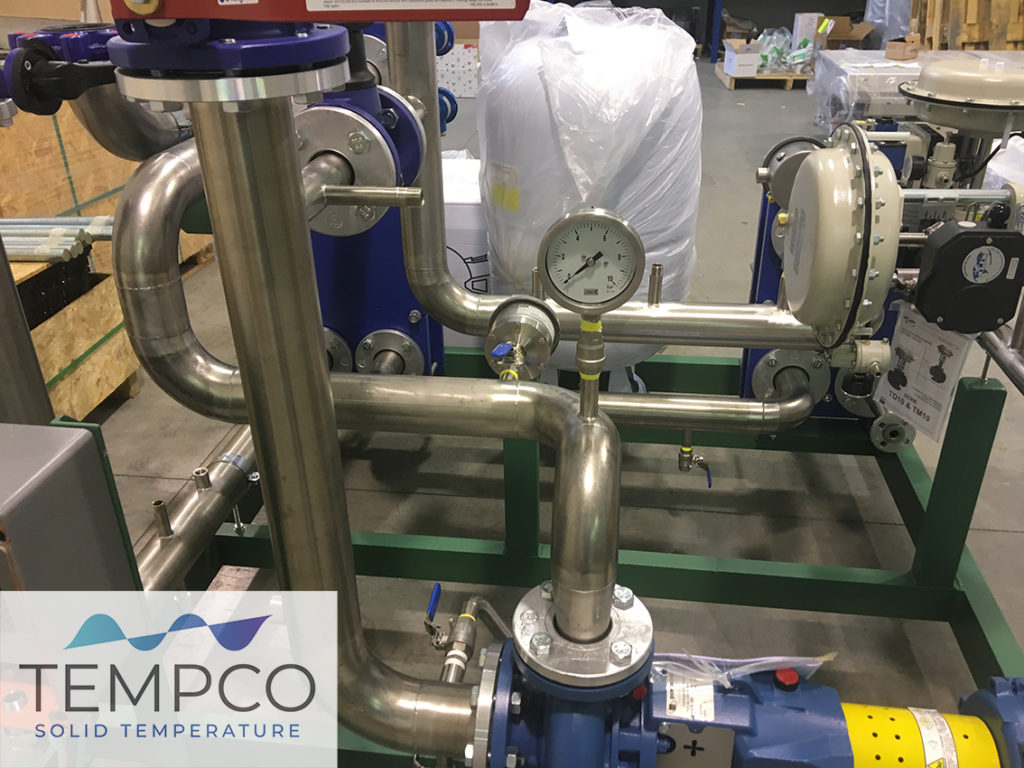The thermoregulating units developed by Tempco for the temperature control in Atex environments are supplied as package skid units ensuring maximum flexibility, with remote management option and compete with certifications required for industrial environments with explosive atmosphere, tipically in pharma, chemical and oil & gas plants.
The engineering of equipments for this kind of environments, in presence of air gases, vapours, mists or dusts coming from the processed products, requires a series of precautions, from the selection of constructive materials Atex compliant through the evaluation of the temperature class.
Temperature classification defines in particular the maximum surface temperature that a machinery, both thermal or electrical, can reach when installed in explosion risk environments, that Tempco evaluates with maximum attention together with the final user. In depth, the temperature class impose that the maximum surface temperature must always be lower than the auto-ignition temperature of the flammable substances in the working environment. The Atex equipments employed can thus include an Atex thermostat for maximum temperature, an Atex pressure switch for maximum pressure check and an Atex temperature sensor.
Also the assembly of components of an Atex skid unit requires some peculiar care. The equipments are intended to thermoregulate fluids, often diathermic oil at high temperatures, so that is crucial to ensure the perfect seal of junction points, because leakage can become a critical issue in hazardous and explosive atmospheres. All the internal connections in the skid unit are flange joints and/or welded. All the gaskets on the flanges can employ spirometallic gaskets, while seals on the instruments, when welding is not possible, are metallic to avoid any possible leakage.
In addition, the flange connections are not only intended to avoid oil leaks, a very critical event in case of Atex environments, but also allow an easy installation. Flange connections provide indeed the guarantee of correct installment values, while with threaded connections one or two thread rotations are enough to get off quota, in addition to the risk of oil leaks. Finally, usually the construction material is stainless steel, in order to ensure maximum corrosion resistance in aggressive environments.

